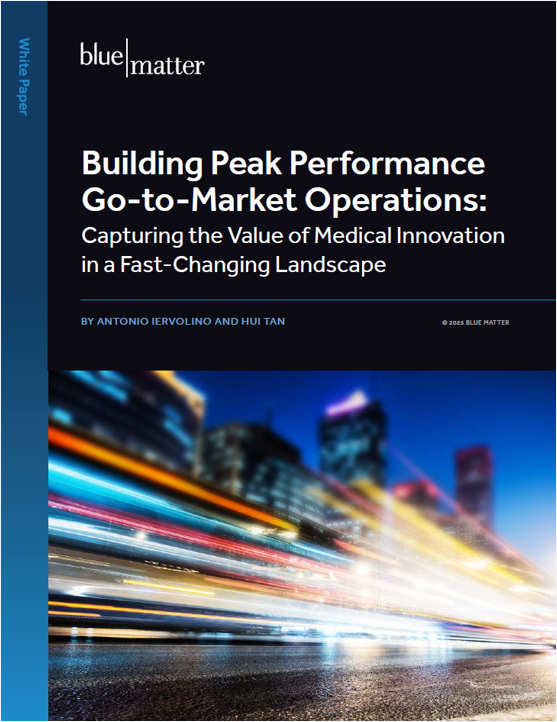
At some point in its development, any growth-minded non-European biopharma company will look to Europe as a possible source of new opportunity. Europe is attractive for various reasons, including its large population, high per-capita spend on healthcare, and vast market potential.
But successfully entering Europe is a complex undertaking, and biopharma companies need to know how to safely navigate the process. The stakes are high, and there are many pitfalls to avoid. In this ongoing series of articles, we are outlining the 12 most common pitfalls that biopharma companies experience as they enter European markets:
- Not knowing what it takes to “go it alone” across Europe
- Not realizing Europe may have its own clinical endpoints in mind
- Missing the opportunity of conditional marketing authorization
- Believing EMA marketing authorization = patient access
- Thinking your list price won’t cross borders
- Missing the mark with local health technology assessment (HTA)
- Not making the right European connections
- Failing to realize that EAPs can boost…or bite
- Missing a promotable label
- Building like big pharma when you’re not
- Using individual preferences vs analysis to select HQ location
- Caring too late about your infrastructure
Why Pitfall #10 Is Important
When a biopharma company is preparing to enter European markets for the first time, it must of course develop a commercial strategy for its launch product, gain marketing authorization, secure the desired levels of market access and reimbursement, and more. But it also must do something else: establish an organization in Europe.
Related to that, the key (simplified) questions are:
- What type of organization should we build?
- How big should it be?
- How much and when should we invest in building various organizational components?
Answering those questions is actually a complex undertaking. There are numerous organizational and operational models to choose from, and determining which one is right is highly dependent on the company’s situation, long-term strategic ambitions, pipeline, and the initial launch product itself.
For example, should a company build a highly centralized European organization, with most decision-making coming from a central European hub? Or, should it build a decentralized organization, with robust capabilities and decision-making in all key European country markets? The answer could depend on a number of factors. A company with a low-volume rare disease product—and a pipeline of similar assets—might opt for a more centralized approach. A firm with a robust pipeline of higher-volume products may need to be more decentralized. But then again, maybe not, because other factors can also affect that decision.
Consider these questions as well: Should a company go with a lean “minimal viable” model with a heavy dependence on outsourced partners or complete an “extensive build” model with strong in-house capabilities in all core markets? Or, should the company begin with one model and then transition to another over time? Again, the answer depends on a host of strategic factors. The decision is not one that can be taken lightly or saved for the last minute.
Unfortunately, biopharma companies sometimes underestimate the degree of rigor that’s needed to decide on the right organizational model and the timeline for investing in the organizational build. In some cases, companies wait too long to begin getting the right capabilities in place and put themselves “behind the curve” when market approval nears for their launch product. In other cases, they over-invest, building too much too soon, only to end up wasting precious resources in the end. Not every company needs to build a full range of in-house capabilities across its markets in Europe. Building like “Big Pharma” when you’re not, can be very costly.
For example…
One biotech company decided to invest heavily in the core European markets, building a robust organization with a wide range of in-house capabilities. Getting stranded in the pricing negotiations, the company ultimately decided to pull out of Europe and significantly downscale the team. This was a costly mistake that could have been avoided (or minimized) if it had “gated” the key steps of its organizational build against meeting certain milestones.
Another biotech company built marketing and sales organizations in the Nordics, Benelux, and France and again had to pull their resources from those markets due to pricing and reimbursement challenges. There are several examples of biotech companies that built their central EU headquarters and hired the key functions at risk, only to let the team go when negative trial results put a halt to the launch.
How to Avoid This Pitfall
There are several related keys to avoiding this pitfall. They are:
- Start early – Realize that the decision is an important one and will take time and effort to make. Start the planning process early, ideally between two and two-and-a-half years before the expected launch. It’s best to avoid having to make decisions under time constraints.
- Understand the different organizational models that exist – There are various organizational and operational models that a company can leverage. In some cases, different models can be used in combination. In any case, it’s important to know what is possible.
- Adopt a systematic planning approach – There are a wide range of factors that can affect the type of organization required in Europe. It’s critically important to identify each of those factors, decide which model each factor might dictate, then assess their impact holistically to arrive at a decision. These factors can include:
- The company’s long-term ambition in Europe – Does the company plan to enter Europe primarily via partnerships or does it ultimately want to build—and own—a fully-integrated commercial capability there?
- Target geographic markets – Is the company interested in only a few European markets or is it planning to enter much more broadly? In which markets does it plan to partner vs. build its own capabilities?
- The launch product – Is the launch product a high-volume primary care asset, a low-volume orphan drug, or something in between?
- The company’s pipeline – Is the company’s pipeline relatively small or is it robust, with many potential launches in the coming years? A robust pipeline might need a larger organization with broader capabilities.
- The capabilities required – Once a company determines the capabilities it needs, the next key step is to decide which ones to outsource vs build in-house.
- Think about timing and “gate” the key steps in the build – Once a company decides what to build, it needs to determine when to build it. Obviously, it doesn’t make a lot of sense to build out a full team and get everything in place before the launch asset has been suitably “de-risked.” However, the company might still need certain capabilities up and running before key clinical data come back or critical reimbursement decisions are made. So, it makes sense to outsource those capabilities until certain milestones or gates are reached, then transition them when the risk levels are more appropriate.
- Plan for contingencies – What happens if you’re planning to use a partner in certain markets but are unable to find a suitable one? What if clinical data show something unexpected or regulators or payers make decisions that were unanticipated? It can be very helpful to proactively identify the most likely problems or issues, then determine how those might affect your organizational build. That way, you won’t be caught off guard when and if they happen.
Hopefully, this short article has reinforced the importance of being proactive and systematic when it comes to planning an organizational build in Europe. It’s a big decision that demands a robust decision-making process.
Coming Next
In our next installment, we’ll address another topic related to the European organization: deciding where to locate a European headquarters. In many cases, companies make this decision based on personal preferences and/or a range of other “unscientific” criteria. However, this is another decision that should not be taken lightly, and demands a rigorous, objective approach. We’ll talk about why (and how) in our next article.





